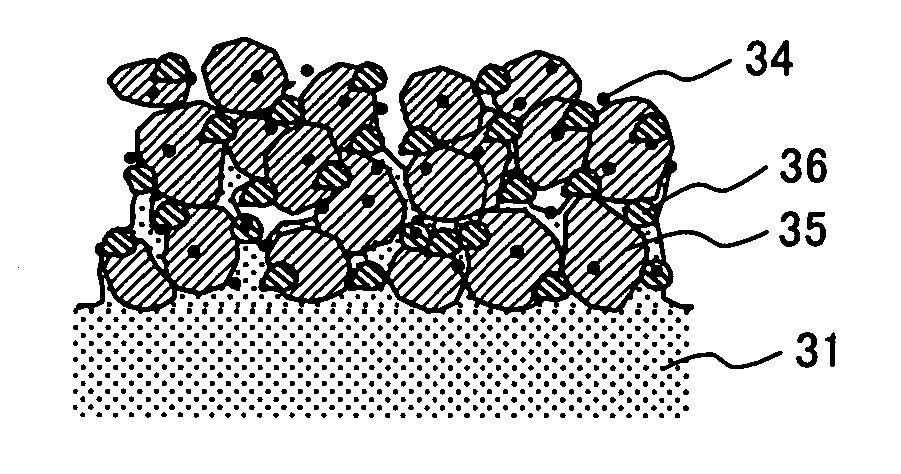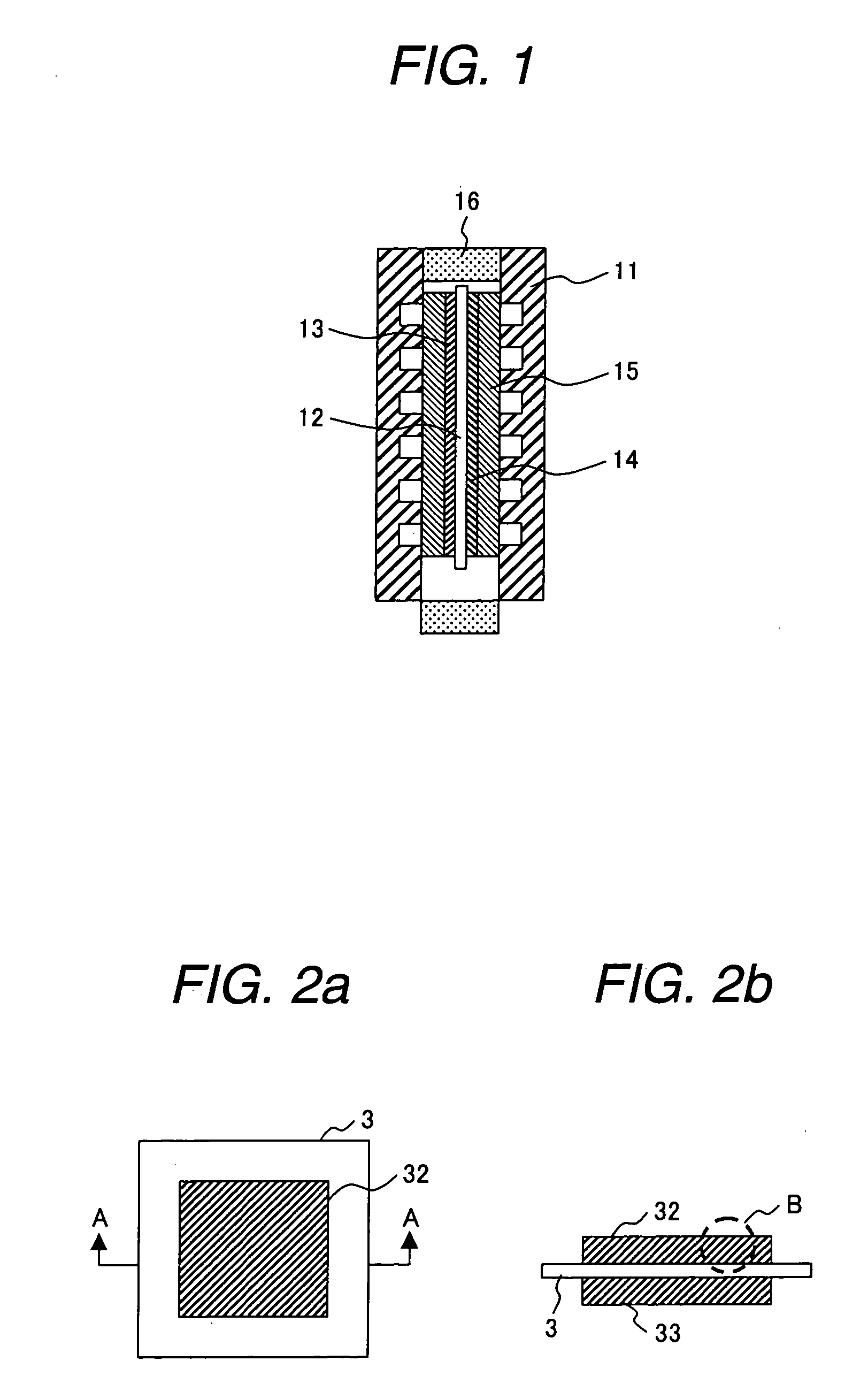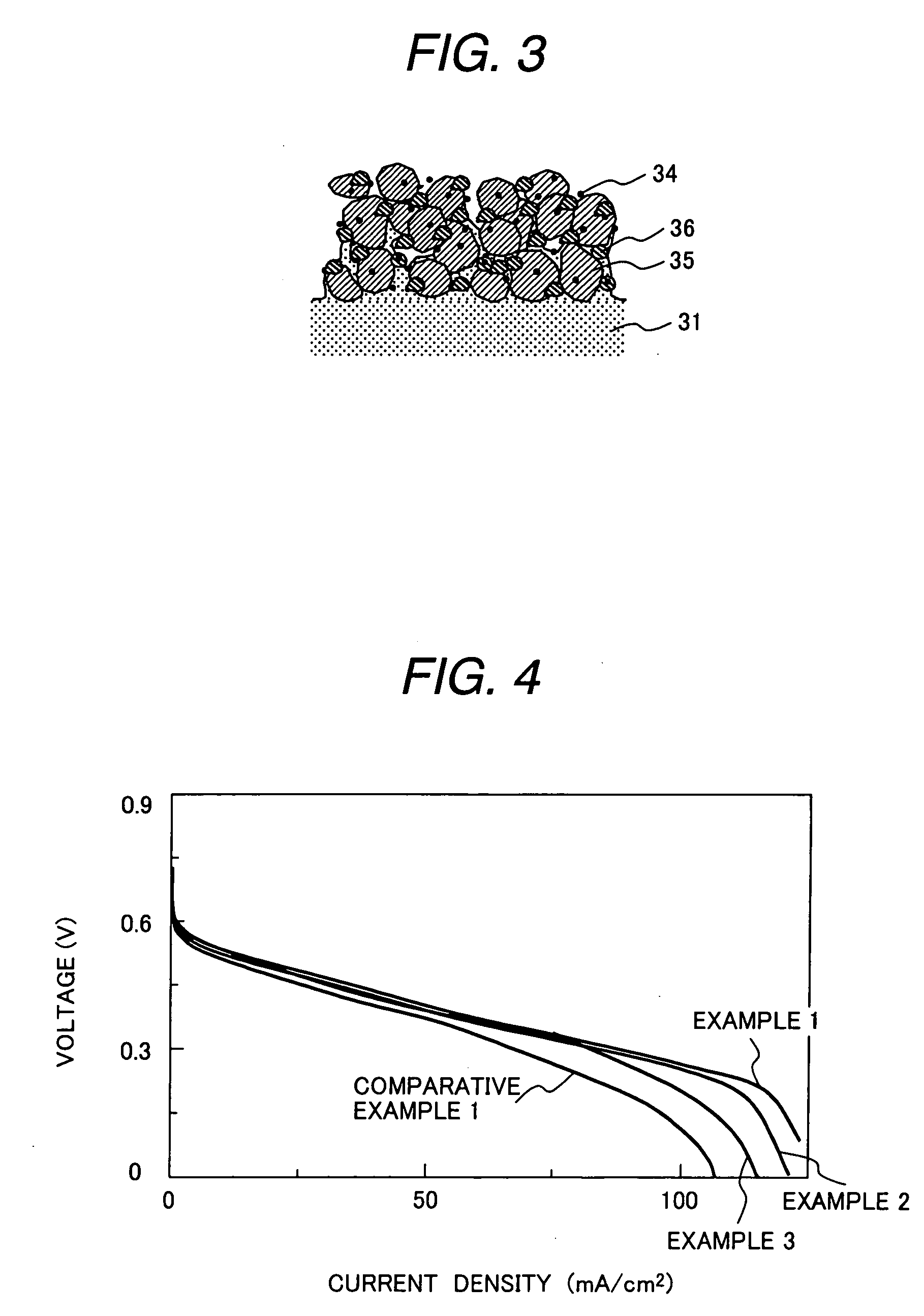Fuel cell and membrane electrode assembly
a fuel cell and membrane electrode technology, applied in cell components, physical/chemical process catalysts, metal/metal-oxide/metal-hydroxide catalysts, etc., can solve the problems of limited fuel cell output, ir drop increase, and obstacle to fuel cell output, etc., to achieve good electric conductivity, increase the output of fuel cells, and water repellency. good
- Summary
- Abstract
- Description
- Claims
- Application Information
AI Technical Summary
Benefits of technology
Problems solved by technology
Method used
Image
Examples
example 1
[0069] Graphite fluoride intercalation compound (n / m=0.58) was used as an electrically conductive, water repellent carbon material. The graphite fluoride was synthesized by reacting graphite manufactured by Tokai Carbon Corp. with fluorine gas at 375% for 120 hours.
[0070] A cathode electrode containing graphite fluoride was prepared in the following manner.
[0071] An electrode catalyst comprising carbon black supporting Pt in an amount of 50% by weight, a Nafion (manufactured by Dupont) solution (5% by weight of Nafion, manufactured by Aldrich Co.) and the graphite fluoride were mixed in a weight ratio (%) of 72:18:10 to prepare a cathode catalyst paste. The ratio of the electrode catalyst to Nafion was 4:1.
[0072] On the other hand, an anode catalyst layer was prepared in the following manner.
[0073] Electrode catalyst comprising carbon black supporting 50% by weight of PtRu alloy at an atomic ratio of 1:1 and a Nafion solution (5% by weight of Nafion, manufactured by Aldrich Co.)...
example 2
[0077] As electrically conductive, water-repellent carbon particles, graphite fluoride (CnFm, n / m=0.58) was used. The graphite fluoride was prepared in the same manner as in example 1.
[0078] Carbon black supporting 50% by weight of Pt, a Nafion solution (5% by weight of Nafion, manufactured by Aldrich) and graphite fluoride were mixed at a mixing ratio (% by weight) of 64:16:20 to prepare a cathode catalyst paste. A ratio of the electrode catalyst to Nafion is 4:1, which is the same as in example 1. The I-V characteristics were measured under the same conditions as in example 1.
example 3
[0079] As electrically conductive, water-repellent carbon particles, graphite fluoride (CnFm, n / m=0.58) was used. The graphite fluoride was prepared in the same manner as in example 1.
[0080] Carbon black supporting 50% by weight of Pt, a Nafion solution (5% by weight of Nafion, manufactured by Aldrich) and graphite fluoride were mixed at a mixing ratio (% by weight) of 76:19:5 to prepare a cathode catalyst paste. A ratio of the electrode catalyst to Nafion is 4:1, which is the same as in example 1. The I-V characteristics were measured under the same conditions as in example 1.
PUM
| Property | Measurement | Unit |
|---|---|---|
| contact angle | aaaaa | aaaaa |
| contact angle | aaaaa | aaaaa |
| contact angle | aaaaa | aaaaa |
Abstract
Description
Claims
Application Information
 Login to View More
Login to View More - R&D
- Intellectual Property
- Life Sciences
- Materials
- Tech Scout
- Unparalleled Data Quality
- Higher Quality Content
- 60% Fewer Hallucinations
Browse by: Latest US Patents, China's latest patents, Technical Efficacy Thesaurus, Application Domain, Technology Topic, Popular Technical Reports.
© 2025 PatSnap. All rights reserved.Legal|Privacy policy|Modern Slavery Act Transparency Statement|Sitemap|About US| Contact US: help@patsnap.com



